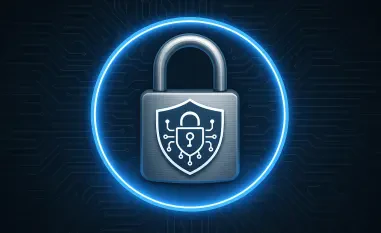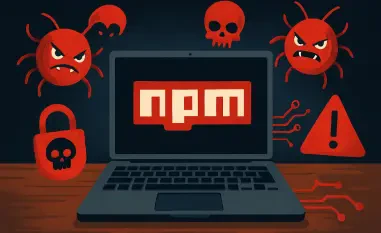Unveiling a Growing Threat in Cyberspace
In a chilling incident earlier this year, a major European aerospace firm discovered a breach that traced back to a seemingly innocuous email from a recruiter offering a lucrative job opportunity. This was no ordinary phishing attempt; it was a meticulously crafted spear phishing campaign orchestrated by the Iranian-linked hacking group Nimbus Manticore, resulting in the theft of sensitive proprietary data. Such incidents underscore a disturbing trend: Iranian cyber-espionage actors are intensifying their operations, targeting critical industries with unprecedented sophistication. This analysis delves into the evolving tactics of Nimbus Manticore, a group tied to the Iranian Revolutionary Guard Corps (IRGC), and explores why their shift toward Western Europe signals a pressing challenge for global cybersecurity.
Evolution of a Persistent Cyber Adversary
Shifting Geopolitical Focus and Key Industries
Nimbus Manticore has long concentrated its cyber-espionage efforts on Israel and Gulf states, but recent data indicates a significant pivot toward Western Europe. Specific risks have been identified for organizations in Denmark, Sweden, and Portugal, marking an expansion of their operational scope. This shift aligns with broader strategic interests, likely driven by state-backed objectives, focusing on regions with advanced technological and defense capabilities.
The industries most at risk include aerospace, telecommunications—particularly satellite providers—aviation, and defense contractors. These sectors are critical to national security and economic stability, making them prime targets for espionage aimed at acquiring sensitive intellectual property or disrupting operations. The alignment of these targets with IRGC priorities suggests a deliberate effort to undermine adversaries or gain strategic advantages.
A notable aspect of their persistence is evident in their uninterrupted activity during a 12-day conflict between Israel and Iran earlier this year. Despite heightened geopolitical tensions, the group maintained its campaigns without faltering, demonstrating a commitment to mission objectives regardless of external pressures. This resilience highlights the challenge of disrupting such determined actors.
Documented Attacks and Tactical Precision
Spear phishing remains a cornerstone of Nimbus Manticore’s approach, with attackers impersonating recruiters from reputable firms in aerospace and telecommunications. Victims are lured to fraudulent career portals, complete with personalized login credentials, ensuring precise tracking and strict access control. These tailored attacks exploit human trust, making them difficult to detect through conventional security measures.
Once engaged, targets are prompted to download malicious archives that initiate a multi-stage infection process. This includes sideloading malicious DLL files into legitimate Windows executables, such as components of Microsoft Defender, to evade detection. Such techniques allow the group to infiltrate high-value targets while maintaining a low profile, often remaining undetected for extended periods.
Detailed case studies reveal the effectiveness of these methods in breaching secure environments. For instance, documented incidents show how personalized phishing emails led to the compromise of critical systems within defense contractors, enabling data exfiltration and persistent access. These real-world examples illustrate the group’s ability to execute complex operations with surgical precision.
Sophisticated Tools and Techniques
Malware Development and Stealth Mechanisms
The malware toolkit of Nimbus Manticore has evolved significantly over recent years, showcasing a high degree of technical prowess. From the early ‘Minibike’ backdoor identified a few years ago, the group has progressed to newer strains like ‘MiniJunk’ and ‘MiniBrowse,’ tailored for file exfiltration, credential theft, and remote command execution. These tools are designed to maximize impact while minimizing visibility.
To achieve stealth, the group employs advanced obfuscation techniques, including multi-stage DLL sideloading and inflated binary sizes to bypass antivirus scans. Additionally, the use of valid code-signing certificates, along with compiler-level obfuscation involving junk code and encrypted strings, further complicates detection. Such methods reflect a mature, well-resourced actor prioritizing operational security over speed.
The sophistication of these tools points to significant investment in research and development, likely supported by state resources. This level of capability allows Nimbus Manticore to adapt quickly to defensive measures, ensuring their malware remains effective against even the most updated security systems. Their focus on evasion underscores the difficulty of countering such threats with standard protocols.
Cloud-Based Infrastructure for Operational Durability
A defining feature of Nimbus Manticore’s strategy is the use of cloud services to bolster operational resilience. By hosting infrastructure on platforms like Azure App Service and leveraging Cloudflare for protection, the group ensures redundancy and rapid recovery of command-and-control (C2) servers if disrupted. This approach minimizes downtime and maintains access to compromised systems.
This reliance on legitimate cloud infrastructure not only enhances durability but also complicates attribution and defense efforts. Attackers blend their malicious activities with regular traffic, making it challenging for security teams to distinguish between benign and harmful operations. Such tactics demonstrate a calculated effort to exploit trusted systems for espionage purposes.
The strategic use of these services reflects a broader trend among advanced threat actors to integrate commercial technologies into their workflows. For Nimbus Manticore, this ensures continuity even under intense scrutiny or takedown attempts, posing a persistent challenge to cybersecurity professionals tasked with neutralizing their operations.
Insights from Cybersecurity Experts
Expert analysis highlights the adaptability and sophistication of Nimbus Manticore as a critical concern in the cyber threat landscape. Researchers note that the group’s ability to tailor social engineering attacks, coupled with heavy obfuscation, sets them apart from less advanced actors. One expert remarked, “Their methods are not just technical; they exploit human vulnerabilities with alarming precision, making traditional defenses inadequate.”
Another significant challenge lies in countering their exploitation of trusted infrastructure. Specialists emphasize that the integration of legitimate cloud services into attack frameworks hinders both detection and disruption efforts. This tactic, combined with the group’s focus on critical industries, amplifies the potential damage of their campaigns across multiple sectors.
The broader consensus is that the escalating risks posed by such actors necessitate a shift in defensive strategies. Experts advocate for advanced threat intelligence and behavioral analysis to identify subtle indicators of compromise. Without such measures, the impact on global cybersecurity could be severe, particularly for industries integral to national and economic security.
Looking Ahead at Iranian Cyber Threats
The trajectory of Nimbus Manticore’s operations suggests potential expansion into additional regions or sectors beyond Europe in the coming years. As their geopolitical ambitions grow, so too might their focus on emerging technologies or infrastructure projects critical to global economies. This could include targeting renewable energy sectors or advanced manufacturing hubs.
While this trend raises challenges, such as the persistent difficulty in attribution and disruption, it also offers opportunities for the cybersecurity community. Increased awareness of these tactics can drive the development of more robust defenses, fostering collaboration among nations and industries. However, the complexity of their methods means that staying ahead will require continuous innovation.
The implications extend beyond technical domains, influencing geopolitical dynamics as well. Escalating Iranian cyber activities could strain international relations, particularly if high-profile breaches are linked to state interests. For at-risk sectors like telecommunications and defense, the urgency to implement fortified cybersecurity measures has never been greater, as the stakes continue to rise.
Reflecting on a Formidable Challenge
Looking back, the cyber-espionage campaigns of Nimbus Manticore stood out as a stark reminder of the evolving nature of digital threats. Their spear phishing strategies, advanced malware tools, and resilient cloud-based infrastructure marked a significant escalation in Iranian-linked cyber operations. The shift toward Western Europe revealed a broadening of their strategic focus, challenging global security norms.
Moving forward, organizations need to prioritize actionable steps to counter this menace. Investing in cutting-edge threat detection systems and fostering international cooperation are essential to mitigate risks. By sharing intelligence and best practices, the global community can build a stronger defense against such sophisticated adversaries, ensuring that critical industries remain safeguarded against future incursions.













